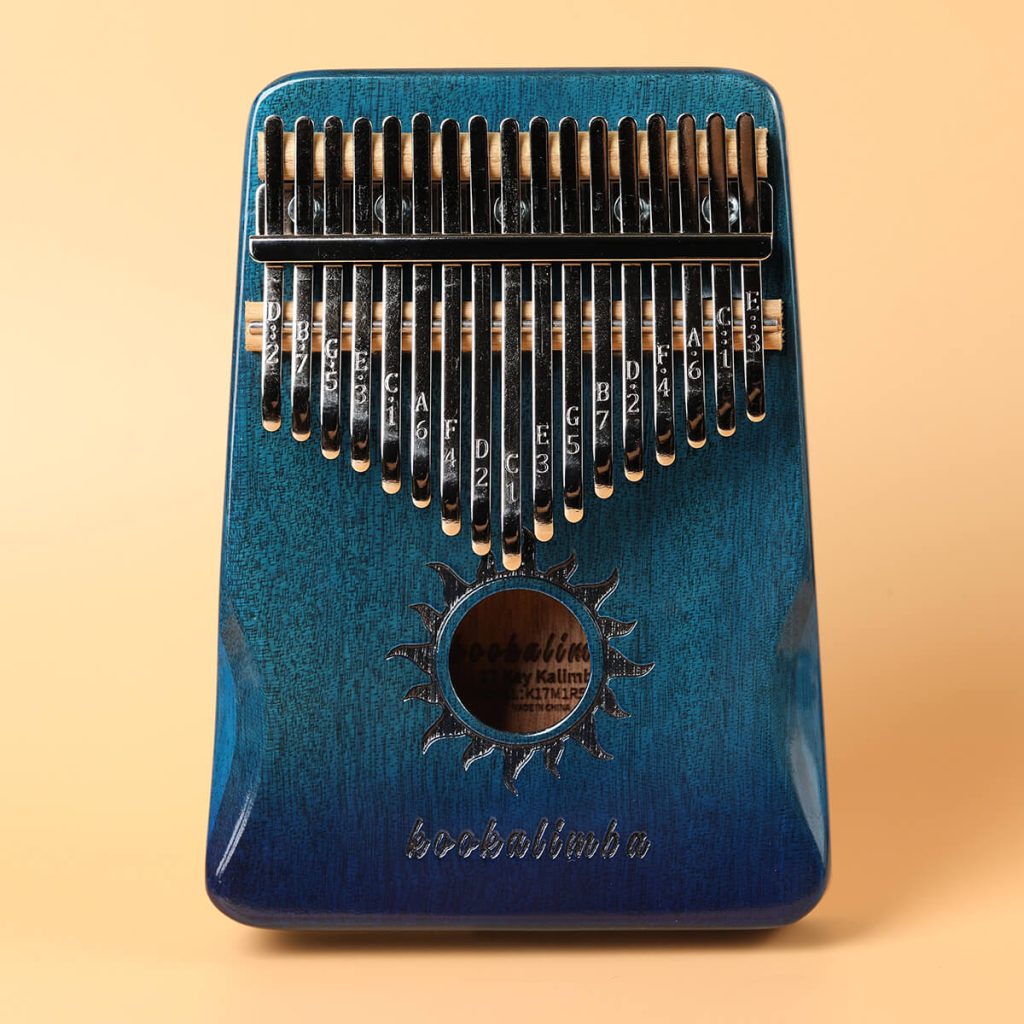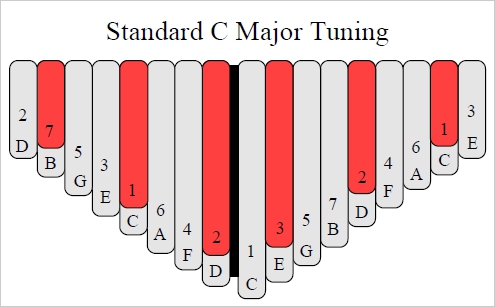Have you ever wanted to learn how to learn to play a kalimba by yourself but didn’t know where to start? This article is for you! I’ll teach you some tips on how to get started by yourself and have fun playing this unique instrument.
- How to Play The Kalimba Thumb Piano
- 2. What Are Some of The Benefits of Learning How to Play The Kalimba
- 3. Know About The Notes On A 17 Notes Kalimba in C major
- 4. What Are Some of The Kalimba Basic Techniques Involved?
- 5. What Are Some of The More Advanced Techniques That Can Be Used to Play The Kalimba?
- 6. Record The Song You Played will Help You to Improve Your Kalimba Techniques
- 7. Learn More Music Theory to Improve Your Kalimba Techniques
- 8. What Do You Need to Avoid Playing A Kalimba
- Conclusion
How to Play The Kalimba Thumb Piano
The kalimba is played by holding the instrument in the hands and plucking the blades with the thumbs. The blades are plucked in a sequential order to create a melody.
To play the kalimba, first, hold the instrument in your hands. Place your thumbs on the outer row of blades and your index fingers on the inner row of blades. Pluck the outer blade with your right thumb and then pluck the inner blade with your left thumb. Continue plucking the blades in this sequence until you reach the end of the song.
2. What Are Some of The Benefits of Learning How to Play The Kalimba
The kalimba is a unique and beautiful instrument that has a wide range of benefits for those who learn how to play it. The first benefit is that the kalimba can be played solo or in an ensemble, making it a versatile tool for performing music. The second benefit is that the kalimba is portable, so it can be taken with you wherever you go. The third benefit is that the kalimba is relatively easy to learn how to play, so even those with no prior musical experience can pick it up quickly. Lastly, the kalimba provides a great way to relax and destress, as the gentle sound of the instrument can help to calm and center the mind. For all these reasons, learning how to play the kalimba is a rewarding experience that offers many benefits.
3. Know About The Notes On A 17 Notes Kalimba in C major
The Kalimba in C major is a 17 note instrument. Each note is tuned to a different pitch, and the arrangement of the notes on the kalimba is similar to that of a piano. The lowest note is C, and the highest note is C#. The notes are arranged in a repeating pattern of two octaves. The first octave is made up of the notes C, D, E, F, G, A, B, and C#. The second octave consists of the notes D, E, F#, G, A, B, C#, and D#. The kalimba can be played by plucking the notes with the fingers or by using a pick. The sound of the kalimba is similar to that of a xylophone or glockenspiel.
4. What Are Some of The Kalimba Basic Techniques Involved?
One of the kalimba basic techniques is to hold the kalimba in your lap with the tines facing up. You will then use your thumbs to pluck the tines. It is important to use the tips of your thumbs when plucking the tines so that you can get a clear sound. Another kalimba basic technique is to hold the kalimba in your hands and pluck the tines with your fingers. This technique is called “finger picking.” You can also use a combination of finger picking and thumb plucking to create different sounds. Experiment with different techniques to see what sounds you can create.
5. What Are Some of The More Advanced Techniques That Can Be Used to Play The Kalimba?
Once you’ve mastered the basics of playing the kalimba, you may be ready to try some more advanced techniques. One common technique is called “thumb rolls.” To play a thumb roll, you simply roll your thumb across the tines of the kalimba, starting with the lowest note and moving up the scale. Another popular technique is known as “hammer-ons.” To play a hammer-on, you simply strike one tine with your thumb and then quickly follow up with another tine. This creates a smooth, flowing sound that is perfect for slow, mellow songs. With a little practice, you’ll be able to play the kalimba using a wide range of techniques.
6. Record The Song You Played will Help You to Improve Your Kalimba Techniques
In order to improve your kalimba techniques, you should first record the song that you played. This will help you to identify the areas in which you need improvement. Once you have identified the areas in which you need improvement, you can then focus on those areas and practice them until you have mastered them. Additionally, by recording the song that you played, you will be able to listen back to it and critique your own performance. This will help you to identify any mistakes that you made and correct them for future performances. Finally, recording the song that you played will also allow you to share it with other kalimba players and receive feedback from them. This feedback can be invaluable in helping you to improve your kalimba technique.
7. Learn More Music Theory to Improve Your Kalimba Techniques
Improve Your Kalimba Techniques by Learning Music Theory. If you are a beginner kalimba player, or even if you have been playing for awhile, learning music theory can help you improve your skills. By understanding how music works, you will be able to play your kalimba with more confidence and creativity. You will also be able to communicate better with other musicians. Music theory is the study of the structure and elements of music. It can help you understand why certain chords sound good together, and how to create melodies that are pleasing to the ear. In addition, music theory can help you sight-read music, which is a valuable skill for any musician. While it may seem daunting at first, learning music theory is well worth the effort. Not only will it make you a better kalimba player, but it will also give you a greater appreciation for the beauty of music.Learning music theory is a great way to improve your kalimba skills. By understanding how music works, you will be able to play your kalimba with more confidence and creativity. You will also be able to communicate better with other musicians. Music theory is the study of the structure and elements of music. It can help you understand why certain chords sound good together, and how to create melodies that are pleasing to the ear. In addition, music theory can help you sight-read music, which is a valuable skill for any musician. While it may seem daunting at first, learning music theory is well worth the effort. Not only will it make you a better kalimba player, but it will also give you a greater appreciation for the beauty of music.
8. What Do You Need to Avoid Playing A Kalimba
If you’re thinking about playing a kalimba, there are a few things you’ll need to avoid. For starters, avoid playing in direct sunlight or near any heat source. This can damage the delicate wood and cause the tuning to go out of place. You’ll also want to avoid playing in wet or humid conditions, as this can cause the wood to warp. And finally, avoid playing with anything other than your bare hands. Playing with picks or other sharp objects can damage the kalimba’s surface and affect the sound quality. So as long as you take care of your kalimba, you should be able to avoid any problems and enjoy making beautiful music.
Tips: How to fix kalimba dead tines?
Conclusion
Learning to play the kalimba by yourself is a fun and rewarding experience. By following the steps outlined in this blog post, you will be well on your way to becoming a kalimba pro! If you’re looking for an easy and fun way to improve your musical skills, why not give the kalimba a try? And remember, if you need any help picking out the perfect instrument, our team at Kalimba Shop is always happy to assist. So what are you waiting for? Start learning today!
